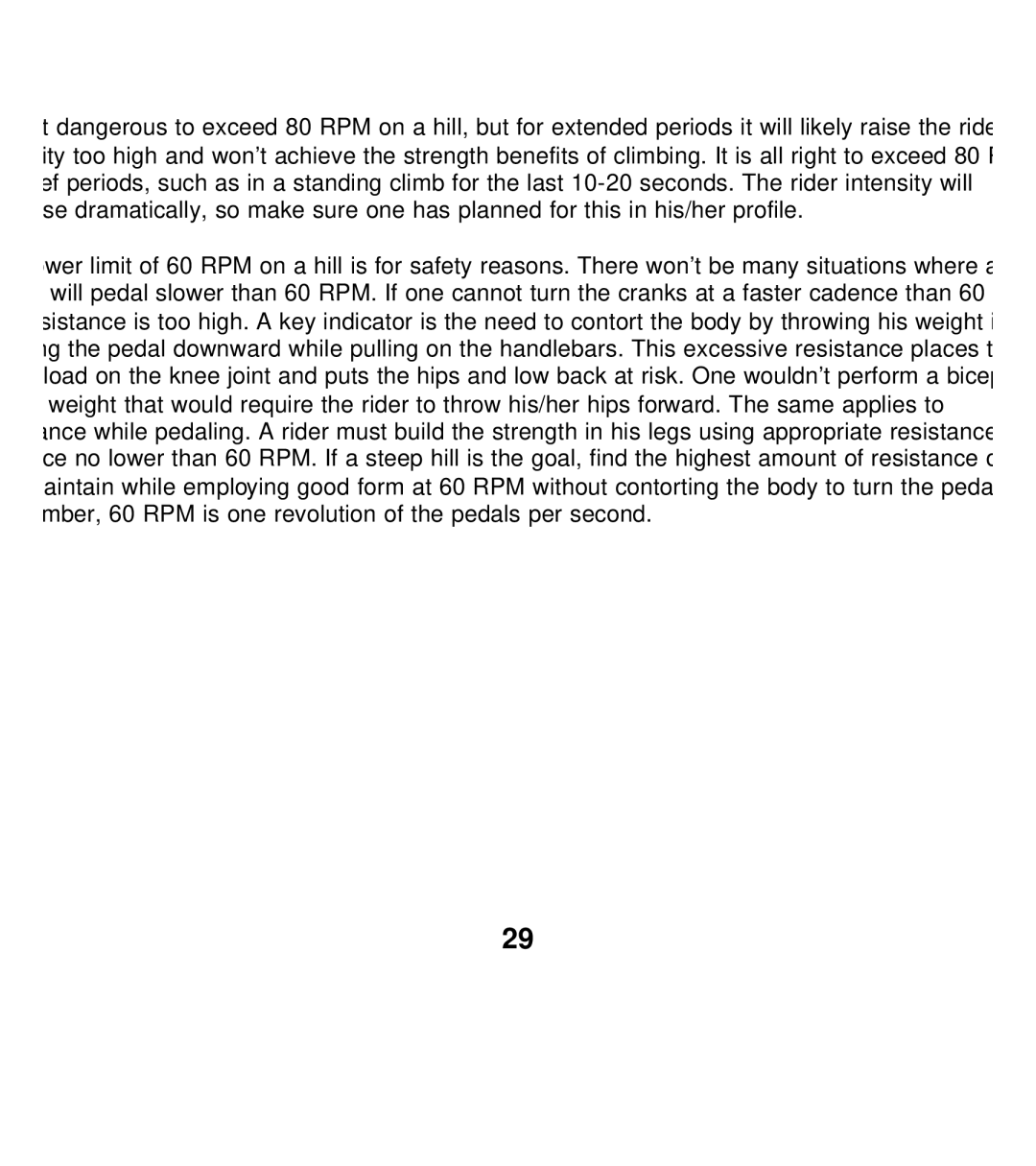t dangerous to exceed 80 RPM on a hill, but for extended periods it will likely raise the ride ity too high and won’t achieve the strength benefits of climbing. It is all right to exceed 80 R ef periods, such as in a standing climb for the last
wer limit of 60 RPM on a hill is for safety reasons. There won’t be many situations where a will pedal slower than 60 RPM. If one cannot turn the cranks at a faster cadence than 60 sistance is too high. A key indicator is the need to contort the body by throwing his weight i ng the pedal downward while pulling on the handlebars. This excessive resistance places t load on the knee joint and puts the hips and low back at risk. One wouldn’t perform a bicep weight that would require the rider to throw his/her hips forward. The same applies to ance while pedaling. A rider must build the strength in his legs using appropriate resistance ce no lower than 60 RPM. If a steep hill is the goal, find the highest amount of resistance o aintain while employing good form at 60 RPM without contorting the body to turn the peda mber, 60 RPM is one revolution of the pedals per second.
29
